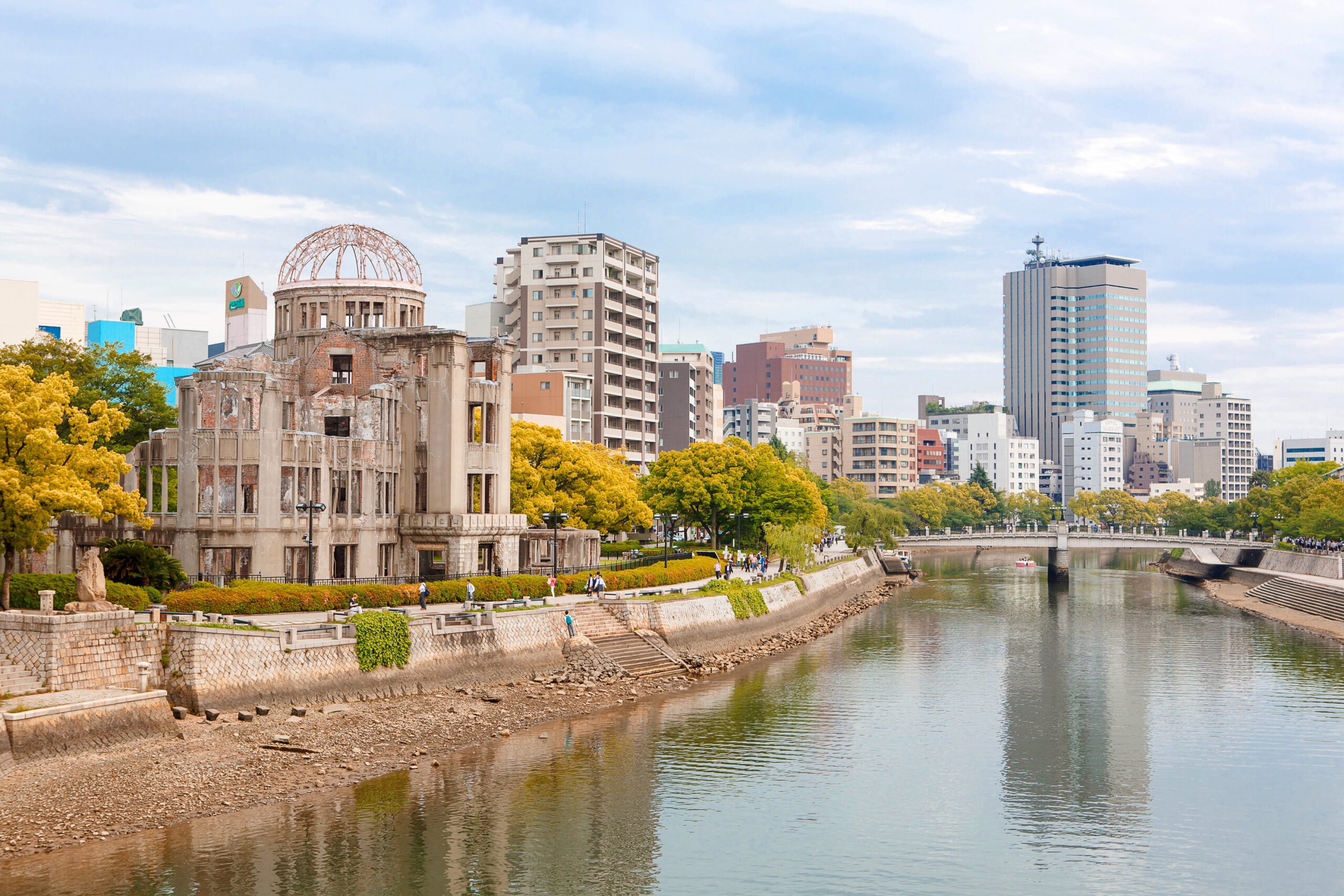
Hiroshima is a city risen from the ashes, but it is also so much more. Next time you head to Japan, stop by and let this vibrant city surprise you.
While Hiroshima may bear a dark history, it is a city and region set very much in the present. With a vibrant cultural centre, thriving food scene and attractions of all kinds this modern metropolis and its surrounding areas are well worth a visit.
The Hiroshima Peace Memorial Park and Museum is often the first stop on the list. A record of 1.74 million visited the museum in 2016, for its emotive photographs and artefacts, including a watch that stopped precisely at 8.15 when the atomic bomb dropped. The Park itself is a peaceful oasis in the heart of the city, isolated by two rivers and bordered by 300 cherry blossom trees.
The Memorial Park is just one of the many attractions that Hiroshima has to offer. The city’s second UNESCO World Heritage Site sits on Itsukushima, the island commonly referred to as Miyajima or “shrine island”. Just 55 minutes by ferry, Miyajama is ranked in the top three most scenic spots in Japan. Itsukushima-jinja shrine, built on the water, is the island’s biggest attraction — its famous gate (torii) appears to float on water at high tide. The island’s highest peak Mount Misen is considered a holy site, worshipped since the sixth century and home to several buddhist structures. At 500 metres above sea level, the peak offers magnificent views, reached by gondola or two-hour hike. Staying at one of the island’s many traditional Ryokans is highly recommended, accompanied by evening walks and views of the shrine illuminated after sunset.
Aside from Hiroshima’s vast range of surrounding islands, there is plenty to see and do in the city. Wine-bars, sake breweries, lounges and nightclubs can be found throughout, while Nagarekawa is home to hundreds of bars and eateries. Hiroshima is the birthplace of Okonomiyaki (a savoury pancake) and home to Japan’s best oysters, often served in Kaki no Dote-nabe, a local hot pot dish layered with miso. Hiroshima’s famed Oyster festival is hosted during February – but there are plenty of festivals that run throughout the year, including the Hiroshima Flower Festival in May and the Saijo Sake festival in October.
Stay here
For a real taste of Japan, head to one of the Ryokans in the area. At these traditional inns, experience true Japanese hospitality – in a kimono, of course. Prepare to swap your shoes for slippers, bathe in an Onsen (hot spring) and enjoy an authentic multi-course Japanese dinner on the floor, all in a minimalistic tatami mat room. Sleeping on traditional futon bedding is all part of the experience, and is much more comfortable than it looks.
Kurayado Iroha, on Miyajima, starts at ¥42,120 (about A$507) for an Ocean View room for two, including dinners and breakfasts.
visit-miyajima.jp
Iwaso is also on Miyajima: prices start at ¥40,000 (about A$480) during low season for a Cottage.
iwaso.com
If a Ryokan isn’t your thing, stay at the Sheraton Grand Hiroshima Hotel on the mainland: a Club King corner suite costs ¥67,500 (A$815) per night.
sheraton-hiroshima
Latest Articles
Don't miss the latest from Luxury Travel
